How We Do It: AAC in the Special Education Classroom
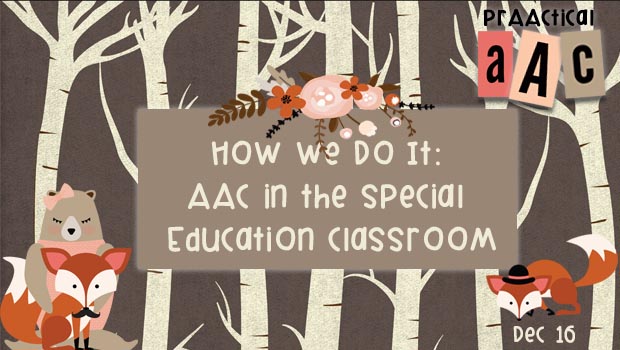
At the ASHA Convention last month, I chatted with an SLP about her secret longing: To take a sabbatical and travel the world to see AAC in action. Wouldn’t that be exciting?!
In the meantime, we’ll have to live vicariously and peek into AAC practices through the words and pictures of dedicated professionals. Angi Pearce, a teacher at Kowhai Special School in Hastings, New Zealand, was kind enough to help us out and share her experiences in increasing AAC use in her classroom. Angi is the team leader for the Junior School classes (ages 5-11) and graciously prepared this post with support from SLP Michelle Roberts. As you’ll see, Angi is a highly experienced educator but new to the world of AAC and not afraid to take risks and embrace change.
Let’s take a look at how a veteran teacher stretched herself to incorporate more AAC into her classroom.
::::::::::::::::::::::::::::::::::::::::::::::::::::::::::::::::::::
AAC IN THE CLASSROOM
My journey into the world of AAC (Augmentative and Alternative Communication) began at the beginning of 2015, when I started teaching at a school for children with special needs. Prior to this, I had been teaching in mainstream primary schools for almost 30 years and I had never heard of AAC. Over the years, I have taught many students in mainstream settings who struggled in the whole area of language and communication. I frequently used individual and class visual schedules, as well as some video self-modelling to help direct positive behaviours.
When I began teaching at Kowhai Special School, I immediately discovered that having one or two students in a class who had communication difficulties was totally different from having a whole class of students with communication difficulties! I had to quickly learn alternative methods of communication in order to help them express themselves as well as fully understand what I was saying. So I set myself the following goals:
- To learn a minimum of one new Makaton sign a week and use it in the classroom with students.
- To encourage my students to use these new signs in their communications.
- To have a ‘signing buddy’ (teacher assistant) to mutually encourage and support each other in learning and using signs.
- To gradually increase my use of the core vocabulary board throughout the school day, with support from the speech language therapists.
So there began my learning journey. Initially, I found Makaton the easiest to use and it quickly became a part of my communication toolkit. It got to the stage that when I went out with my husband in the weekends, I would greet people using Makaton Sign – it had become so automatic for me!
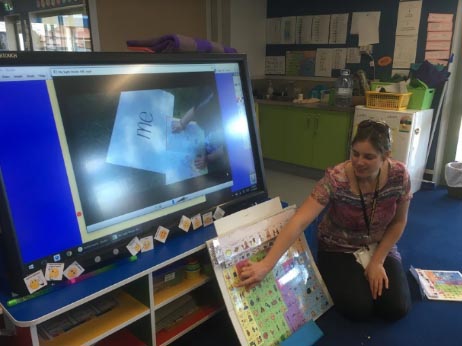 I found the core vocabulary board a lot more difficult to master initially. To start with, I had a board with just 50 symbols, but I found this very limiting, as I wanted to be able to say so much more using it, so I changed to a board with 112 symbols. This gave me much more scope for communication. I started by using an A4-sized board, then moved to an A3-sized board. Later, a set fringe vocabulary was added to the top, which significantly widened the scope of language that I could model. The introduction of an A2-sized core board with a robust set of fringe vocabulary in 2016 was the turning point where AAC really took off in my classroom.
I found the core vocabulary board a lot more difficult to master initially. To start with, I had a board with just 50 symbols, but I found this very limiting, as I wanted to be able to say so much more using it, so I changed to a board with 112 symbols. This gave me much more scope for communication. I started by using an A4-sized board, then moved to an A3-sized board. Later, a set fringe vocabulary was added to the top, which significantly widened the scope of language that I could model. The introduction of an A2-sized core board with a robust set of fringe vocabulary in 2016 was the turning point where AAC really took off in my classroom.
For a long time, though, my most commonly used pathways using the core vocabulary board were, “Your turn next”, “Finished”, “Sit,” “Look, “Wait” and “Stop.” The modelling was all by me and none of the students used it at the early stages, although they did respond to my communication using the board. I also only tended to use it during circle time in the mornings, neglecting it the rest of the day.
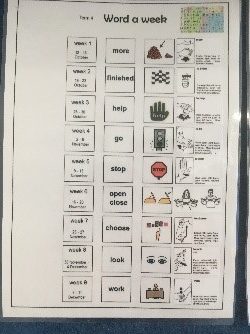 Towards the end of 2015, some of my students got their own core vocabulary boards – to start with, they just had the core vocabulary and no fringes. As with the large board used in circle time, it was mainly used for teacher modelling and not used much by the students. To help teachers learn where symbols are on the board and to use the board more frequently, the speech language therapists developed “Core Word Calendars” which encouraged staff to focus on one core word and Makaton sign per week, along with suggested phrases.
Towards the end of 2015, some of my students got their own core vocabulary boards – to start with, they just had the core vocabulary and no fringes. As with the large board used in circle time, it was mainly used for teacher modelling and not used much by the students. To help teachers learn where symbols are on the board and to use the board more frequently, the speech language therapists developed “Core Word Calendars” which encouraged staff to focus on one core word and Makaton sign per week, along with suggested phrases.
2016 arrived, and with it I had a new resolve to accelerate the use of AAC in my classroom in order to promote an inclusive and language-rich environment, where aided language stimulation is used throughout the day. An expectation of teachers in New Zealand is that they carry out teaching inquiries in order to keep their own teaching and learning constantly moving forward. I decided to investigate how I could foster and embed a team approach to total communication in my classroom. I decided that the steps I needed to take to achieve this were as follows:
- Make an expectation that any staff working in my room use the communication tools that are available e.g. Core vocabulary board, Makaton.
- Seek out tools that can be used in a range of settings with the support of the speech language therapists.
- Use the target CVB and Makaton weekly word charts from the SLT….encourage staff to use the word/sign of the week, as well as the ones from previous weeks.
- Research how other schools have brought their classroom staff on-board with the total communication approach.
I aimed for the students to be exposed to constant modelling of the strategies and tools, regardless of who they were working with. They would be encouraged and supported to use the tools as well, which would give them a greater ability to express themselves and understand others.
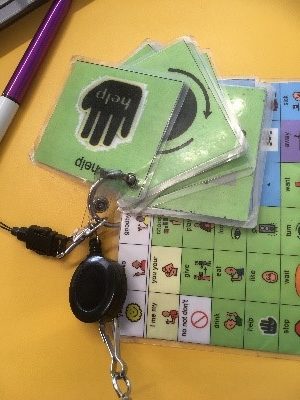 At the beginning of the year, the speech-language therapists gave me and my teacher assistants each a lanyard with 11 core symbols to support receptive language and behaviour management. I immediately introduced the expectation that all staff in my room were to wear their core vocabulary lanyards at all times. Initially, this was met with resistance, but change came as I continued to model its use and the students started to interact with them. A breakthrough came when one student flicked through the symbols on one teacher assistant’s lanyard to find the symbol for ‘toilet’ and pointed to it, indicating he wanted to go. This was the beginning of students using the symbols for expressive communication and encouraged the teacher assistants to persevere with modelling and using the lanyard symbols. We also added a mini core vocabulary board to the lanyard – it had 30 core symbols and a fringe with yes, no, hello, goodbye, please and toilet on it.
At the beginning of the year, the speech-language therapists gave me and my teacher assistants each a lanyard with 11 core symbols to support receptive language and behaviour management. I immediately introduced the expectation that all staff in my room were to wear their core vocabulary lanyards at all times. Initially, this was met with resistance, but change came as I continued to model its use and the students started to interact with them. A breakthrough came when one student flicked through the symbols on one teacher assistant’s lanyard to find the symbol for ‘toilet’ and pointed to it, indicating he wanted to go. This was the beginning of students using the symbols for expressive communication and encouraged the teacher assistants to persevere with modelling and using the lanyard symbols. We also added a mini core vocabulary board to the lanyard – it had 30 core symbols and a fringe with yes, no, hello, goodbye, please and toilet on it.
The lanyard symbols were useful for interactions with the students in the playground. We would use it, for example, with students on the swings we could point to the symbols, ‘big’ and ‘little’ to ask them, “Do you want a big push or a little push?”
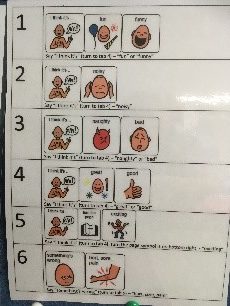 In Term 2, one of the students in my class started to trial a PODD (Pragmatic Organisation Dynamic Display). This presented a whole new challenge with its introduction – how to work with two different AAC tools at the same time in the classroom (or three, if you count Makaton Sign as well). We struggled our way through the term, with little success beyond using a few symbols such as “Hello” and “Your turn.” We found there were so many pages, we didn’t know where to start! The speech language therapists came to the rescue and produced a weekly pathway calendar for us to use with her, much like the core vocabulary calendars. This was a help for us and aided us in beginning to learn some of the most commonly used pathways. A copy of the pathway calendar was sent home for her family to use as well.
In Term 2, one of the students in my class started to trial a PODD (Pragmatic Organisation Dynamic Display). This presented a whole new challenge with its introduction – how to work with two different AAC tools at the same time in the classroom (or three, if you count Makaton Sign as well). We struggled our way through the term, with little success beyond using a few symbols such as “Hello” and “Your turn.” We found there were so many pages, we didn’t know where to start! The speech language therapists came to the rescue and produced a weekly pathway calendar for us to use with her, much like the core vocabulary calendars. This was a help for us and aided us in beginning to learn some of the most commonly used pathways. A copy of the pathway calendar was sent home for her family to use as well. 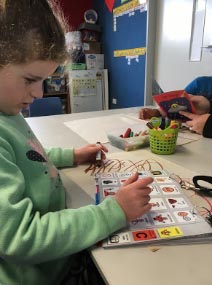 Whomever was working with her for her literacy and numeracy would also have the PODD with them to support communications. The PODD is an ongoing learning journey for us, as we have found its use quite challenging. One teacher assistant sat with her at circle time and modeled with the PODD, while I modeled the large core vocabulary board. Each of the students had individual core vocabulary boards, which were modeled by teacher assistants.
Whomever was working with her for her literacy and numeracy would also have the PODD with them to support communications. The PODD is an ongoing learning journey for us, as we have found its use quite challenging. One teacher assistant sat with her at circle time and modeled with the PODD, while I modeled the large core vocabulary board. Each of the students had individual core vocabulary boards, which were modeled by teacher assistants.
At the same time, we were given our A2-sized core vocabulary board, with a complete fringe set. It was from here that I saw an exponential growth in student communication in my room. This large-sized core 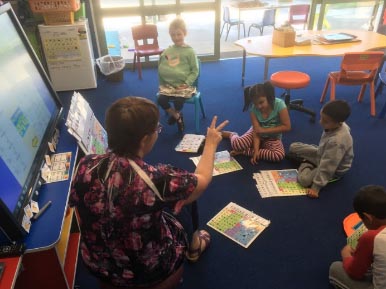 vocabulary board became the focus of communications any time we had mat time. The students also had their personal core boards beside them and were encouraged to use them as the large one was being used. So, when I modeled “Good morning” at the start of the day, the students would respond by pointing to the same symbol on their core board, as well as vocalising the greeting if they were able. After circle time, the core vocabulary boards were scattered around the room so that one was accessible to anyone at any time. This encouraged staff to use them when working with individuals in literacy and numeracy times. During literacy, we used them to support comprehension….we gave them choices related to the story, e.g. “Did the boy have a dog or a cat?” For writing, the students used the core vocabulary board or PODD to indicate what they want to write in their story. In numeracy, we used them to support number recognition, counting, shapes, colours etc. An exciting moment was when one of my boys with autism, who only spoke in one or two word utterances, started to independently use the core vocabulary board to create 5-6 word utterances, both verbally and pointing to the symbols. The team of occupational therapists and speech language therapists used them whenever they took students for sessions, which worked really well for continuing the expectation that students would use AAC in all settings.
vocabulary board became the focus of communications any time we had mat time. The students also had their personal core boards beside them and were encouraged to use them as the large one was being used. So, when I modeled “Good morning” at the start of the day, the students would respond by pointing to the same symbol on their core board, as well as vocalising the greeting if they were able. After circle time, the core vocabulary boards were scattered around the room so that one was accessible to anyone at any time. This encouraged staff to use them when working with individuals in literacy and numeracy times. During literacy, we used them to support comprehension….we gave them choices related to the story, e.g. “Did the boy have a dog or a cat?” For writing, the students used the core vocabulary board or PODD to indicate what they want to write in their story. In numeracy, we used them to support number recognition, counting, shapes, colours etc. An exciting moment was when one of my boys with autism, who only spoke in one or two word utterances, started to independently use the core vocabulary board to create 5-6 word utterances, both verbally and pointing to the symbols. The team of occupational therapists and speech language therapists used them whenever they took students for sessions, which worked really well for continuing the expectation that students would use AAC in all settings.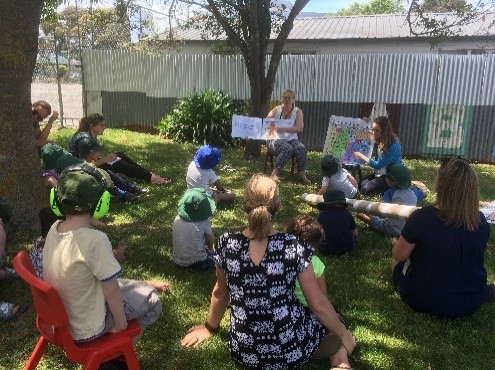
Out in the playground, staff started to carry around either the PODD or the A4 core vocabulary board and lanyards with them. They used them in their interactions with students as they played. We found that the more we modelled their use, the more students started to point to symbols – for example, one non-verbal boy started to point to the symbols, “I – want – big – “ and then sign the word ‘push’, when he wanted someone to push him on the swing.
Staff and students in my class this year have grown so much in their use of AAC and it has been exciting to observe the resulting ‘communication explosion’ in the students. These tools have given them a voice – their own voice. Just recently, the realisation hit me that students go through the ‘babbling stage’ when using AAC, just as babies learning to talk also babble before producing meaningful words. This means that students in the early stages of using AAC would point randomly to symbols, and we would attribute meaning to their ‘babbling.’
Looking forward, the speech language therapists are in the process of developing A5-sized core boards with fringe vocabulary. These will be able to be worn by teaching staff so that wherever we are, we are able to communicate with students who require alternative ways of communicating. We are also considering ways to permanently have access to aided language systems in the playground, for example, a large, painted core board available to students and staff.
All of us still have a long way to go on the AAC journey, but with each new sign or symbol we use and each new interaction we use them in, it is becoming the culture of our classroom – and, indeed, our school. It’s our hope that every student develops a way to express themselves in a purposeful and meaningful way.
Filed under: Featured Posts, PrAACtical Thinking
Tagged With: classroom, core vocabulary, school, signing
This post was written by Carole Zangari


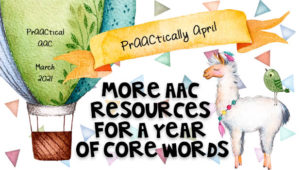
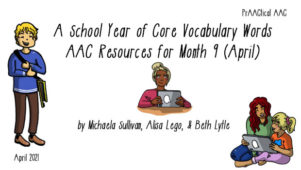

2 Comments
Dear Carol,
I want to start using this system in my classroom so badly, but I’m having trouble researching to find one to purchase or to make. I found a limited version on Teacherspayteachers.com
Can you help me with resources to buy or make a core language board??
Karen, I can certainly guide you to resources for this. What symbols are your students working with? Once I know that, I can give some more specific ideas.